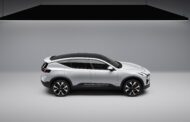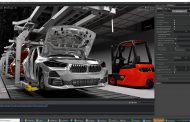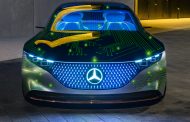Leading computer graphics hardware firm, NVIDIA used CES show to launch the DRIVE AutoPilot. The company says the Drive Autopilot is the first commercially available Level 2+ automated driving system in the world. According to Nvidia, the AI technologies used as part of Drive Autopilot will make it possible to produce supervised self-driving vehicles as early as next year.
Leading automotive suppliers Continental and ZF have already announced self-driving solutions which incorporate Drive AutoPilot at the CES show. It has also been confirmed that mass production of the automated driving technology will begin in 2020.
The DRIVE AutoPilot comes with Xavier system-on-a-chip (SoC) processors which are paired with high end software to process many deep neural networks (DNNs) for perception in addition to complete surround camera sensor data collected from the external environment and from inside the vehicle’s cabin.
Xavier is the world’s first automotive-grade processor for autonomous driving and is currently in production. When Xavier is used along with NVIDIA software, vehicles can exhibit full self-driving autopilot capabilities, which can cover features like highway merge, lane change, lane splits and personal mapping. The features available for the driver’s use inside the cabin include driver monitoring, AI copilot capabilities and advanced in-cabin visualization of the vehicle’s computer vision system.
NVIDIA said that AutoPilot is part of the flexible NVIDIA Drive platform that is currently being used by hundreds of companies across the world to develop autonomous vehicle solutions that can increase road safety while reducing driver fatigue and driving related stress related to long drives or stop-and-go traffic.
The new Level 2+ system complements the NVIDIA DRIVE AGX Pegasus system that provides Level 5 capabilities for robotaxis. The new solution also addresses the limitations of current Level 2 ADAS systems. A recent insurance institute for highway safety study showed that current ADAS systems were not highly dependable as they offered inconsistent vehicle detections and poor ability to stay within lanes on curvy or hilly roads, causing situations where the driver had to assume control suddenly.
“Lane keeping and adaptive cruise control systems on the market today are simply not living up to the expectations of consumers,” said Dominique Bonte, vice president of Automotive Research at ABI Research. “The high-performance AI solutions from NVIDIA will deliver more effective active safety and more reliable automated driving systems in the near future.”
Within the vehicle, DRIVE IX intelligent experience software facilitates occupant monitoring. This makes it possible to detect distracted or drowsy drivers and provide alerts, or to take corrective action if needed. It is also used to create intelligent user experiences, including the new ability for augmented reality. Displaying a visualization of the surrounding environment sensed by the vehicle, as well as planned route, instills trust in the system.





















